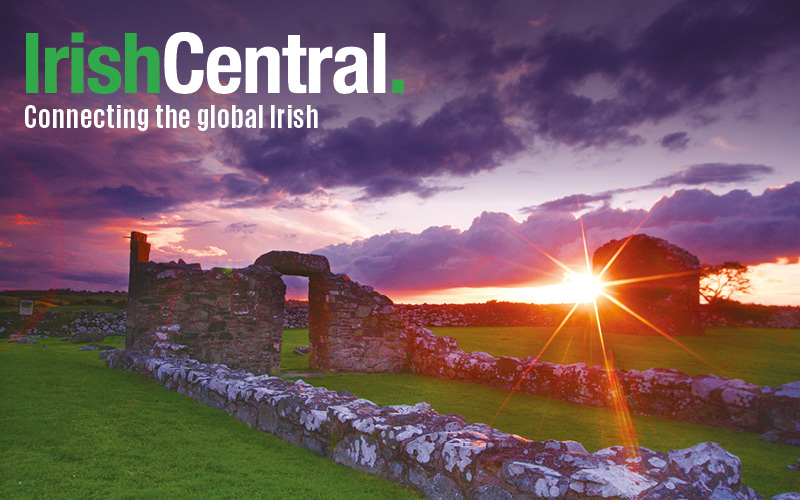When you think of it, some of the worst battles were fought in the very nicest of places.
Think Flanders, the banks of the Boyne, or the Little Big Horn.
The rich, rolling farmland around Gettysburg is a treat to the eye.
So is the rolling farmland not too many miles to the south, just across the state line in Maryland, near the town of Sharpsburg.
In the American Civil War there were multiple divisions in play.
One of them was the divide over the naming of some of the biggest battles.
The Confederate side would name a battle after the nearest town or settlement.
The Union side would plump for moving water.
So, from as northern perspective, the Battle of Sharpsburg is remembered as Antietam.
Read More: The Irish Brigade at Antietam - Passing on the stories of the Irish in America
It’s a name that sends shivers to this day through the spines of those who study the great conflict between the states.
It also speaks of a day when the American Irish earned their place in American military lore by virtue of the shedding of a whole lot of Irish immigrant blood.
That day was September 17th, 1862, exactly 154 years ago this weekend.
Antietam stands out as the bloodiest day in American history.
More than 26,000 soldiers were left dead, wounded, or missing after the battle.
Hundreds of the Union dead were members of the regiments of the Irish Brigade.
The Irish Brigade was founded in August, 1861.
Originally composed of the heavily Irish 63rd, 69th, and 88th New York regiments, it quickly earned a reputation for fearlessness and tenacity, especially at the battles of Seven Days, Fair Oaks, and Malvern Hill.
Its leader, Brigadier General Thomas Francis Meagher, was an Irish nationalist who participated in the Young Ireland uprising of 1848 and was exiled to Tasmania by the British.
He later escaped and came to America in 1852, where he assumed a leading role in the Irish nationalist movement.
Meagher hoped his brigade’s performance would raise the low standing of the Irish in American eyes, and provide experienced recruits for a future Fenian uprising in Ireland.
His men would have an opportunity to fight back against that low standing by standing tall - in a Maryland farm field.
The Battle of Antietam took place as a result of Confederate General Robert E. Lee’s decision, in keeping with his belief that a smaller army needed to wage offensive war, to invade the North.
In early September, 1892, he marched his 50,000-man force into Maryland.
Read More: New book proves who was the greatest Irishman in American history
His goal was to win a decisive victory on northern soil, a victory he and other Confederate leaders believed would win them foreign recognition and independence.
Opposing Lee was the ever-cautious Union commander, General George B. McClellan.
Even after he acquired a copy of the Confederate battle plan left at an abandoned campsite, McClellan waited four days before striking.
The delay allowed Lee to change his plans and consolidate his army at the town of Sharpsburg, near Antietam Creek.
Union forces attacked early in the morning on the 17th.
The first thrust came against the northern end of Lee’s line.
The Confederates buckled but managed to hold their position against the furious assault.
At 10:30 a.m., a second Union assault began against the Confederate center.
It was here that Meagher and the Irish Brigade cemented their reputation as one of the toughest formations in the Union army.
Marching behind three green banners, the Irish Brigade crossed the creek.
On the other side they paused a moment to receive a general absolution from Fr. William Corby, the brigade’s chaplain.
After taking out a small force of Confederates who fired upon them from behind a thick fence, the brigade marched slowly up a slight hill, from the lower part of a field to its crest
Reaching the crest, they were greeted with a murderous volley of Confederate fire.
The brigade’s men took what cover they could find and began returning fire.
They were at a distinct disadvantage because the Confederates held a protected position along a sunken road, which is also still evident today.
After six volleys of return fire, Meagher ordered a fixed bayonet charge.
It was a courageous but ultimately suicidal assault. Roughly half the brigade’s men fell in the first charge.
Four more frontal assaults were ordered over the next three hours, each bringing the same horrific result.
On several occasions men of the Irish Brigade reached the sunken road — known thereafter as “Bloody Lane” — and fought hand to hand with the Confederates before being killed.
One of the Irish struck down was Captain Patrick Clooney from County Waterford and of the 88th New York.
Clooney’s last moments have been immortalized in a print by famed Civil War artist, Bradley Schmehl.
Eventually the Union center, including the Irish Brigade, was forced to pull back to a defensive position.
Now it was their turn to mow down Confederates, who several times emerged from the sunken road in an effort to breach the Union line.
By nightfall the fighting ceased.
Read More: Many Irish actually emigrated in order to fight in the American Civil War
McClellan had nearly driven Lee from the field, but the last-minute arrival of troops under Generals Stonewall Jackson and A.P. Hill helped save the day for the gray and butternut-clad Confederates.
The battle ended with no clear winner, but when Lee took his tattered army back into Virginia the next day, Antietam was hailed in the North as a Union victory.
It might have been more, had McClellan chosen to pursue Lee, but the risk-averse general opted to stay put. His failure to seize the initiative would soon lead Lincoln to dismiss him.
The human cost of the battle was staggering no matter which side was the formal winner or loser.
In one day more than 26,000 men (12,410 Union and 13,724 Confederate) were killed or wounded.
No unit suffered more than the Irish Brigade, which lost 540 killed and wounded.
Meagher’s Brigade was not the only Irish unit to suffer terrible losses that day.
The Irish 6th Louisiana, one of many Irish regiments in the Confederate Army, was part of the force that held off the initial Union assault.
Like its Union counterparts, it suffered fearful losses, including its commanding officer, Col. Henry B. Strong.
(In one of those twists of history, the modern day National Guard successors to the Louisiana Irish of Antietam would stand shoulder to shoulder with the New York 69th in the Iraq war).
The Irish Brigade was soon reconstituted with the addition of the Irish 28th Massachusetts and 116th Pennsylvania.
There would be future battles awaiting - at Fredericksburg, Gettysburg, Spotsylvania to name but some.
By war’s end, when the Irish Brigade marched in the Grand Review down the streets of Washington, D.C., on May 22, 1865, it was one of the most famous brigades in the Union army.
Despite this, it took quite a campaign in the 1990s to erect a monument to the brigade’s exploits at the Antietam battlefield site.
A new policy by the National Parks Service meant that there would be no more memorials.
The Irish Brigade Monument would be the last permitted and, in a sense, that allowed the Irish Brigade to have, in one sense, the last word on America’s bloodiest day.
Also, in 1863, a memorial to Captain Clooney was erected near his birthplace in Ballybricken churchyard, Co. Waterford.
The monument survives to this day.




Comments